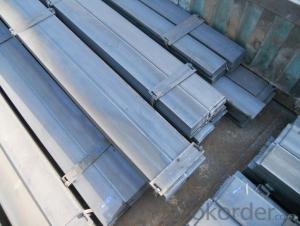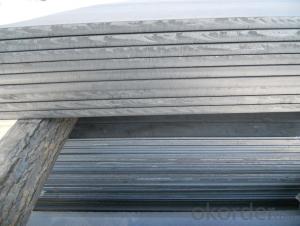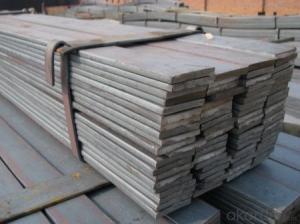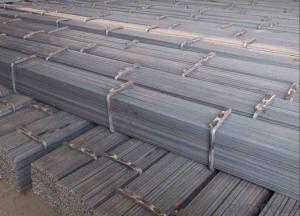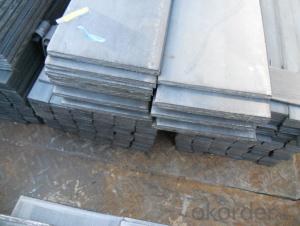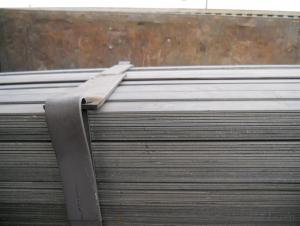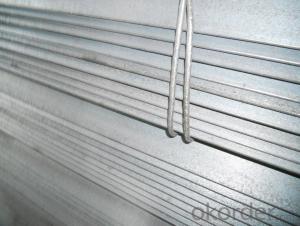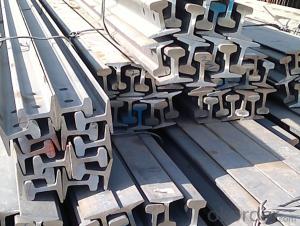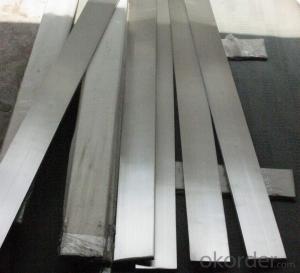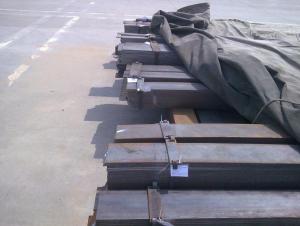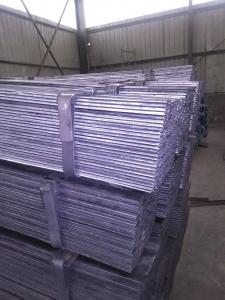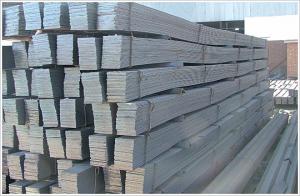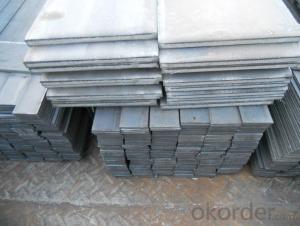Prime Mild Steel Hot Rolled Flat Steel Bar
- Loading Port:
- China main port
- Payment Terms:
- TT OR LC
- Min Order Qty:
- 100 m.t.
- Supply Capability:
- 10000 m.t./month
OKorder Service Pledge
OKorder Financial Service
You Might Also Like
Specification
Product Description:
OKorder is offering Prime Mild Steel Hot Rolled Flat Steel Bar at great prices with worldwide shipping. Our supplier is a world-class manufacturer of steel, with our products utilized the world over. OKorder annually supplies products to African, South American and Asian markets. We provide quotations within 24 hours of receiving an inquiry and guarantee competitive prices.
Product Applications:
Prime Mild Steel Hot Rolled Flat Steel Bar are ideal for structural applications and are widely used in the construction of buildings and bridges, and the manufacturing, petrochemical, and transportation industries.
Product Advantages:
OKorder's Prime Mild Steel Hot Rolled Flat Steel Bar are durable, strong, and wide variety of sizes.
Main Product Features:
· Premium quality
· Prompt delivery & seaworthy packing (30 days after receiving deposit)
· Can be recycled and reused
· Mill test certification
· Professional Service
· Competitive pricing
Product Specifications:
Manufacture: Hot rolled and Slited
Grade: Q195 – 235
Certificates: ISO, SGS, BV, CIQ
Length: 6m – 12m, as per customer request
Packaging: Export packing, nude packing, bundled
Processing: the thickness of 2.0-16 mm;
Shear length: 2000 mm above
Wide degree: 15-1250 - mm;
Leveling precision: 1-2 MM square
FAQ:
Q1: Why buy Materials & Equipment from OKorder.com?
A1: All products offered byOKorder.com are carefully selected from China's most reliable manufacturing enterprises. Through its ISO certifications, OKorder.com adheres to the highest standards and a commitment to supply chain safety and customer satisfaction.
Q2: How do we guarantee the quality of our products?
A2: We have established an advanced quality management system which conducts strict quality tests at every step, from raw materials to the final product. At the same time, we provide extensive follow-up service assurances as required.
Q3: How soon can we receive the product after purchase?
A3: Within three days of placing an order, we will arrange production. The normal sizes with the normal grade can be produced within one month. The specific shipping date is dependent upon international and government factors, the delivery to international main port about 45-60days.
Images:

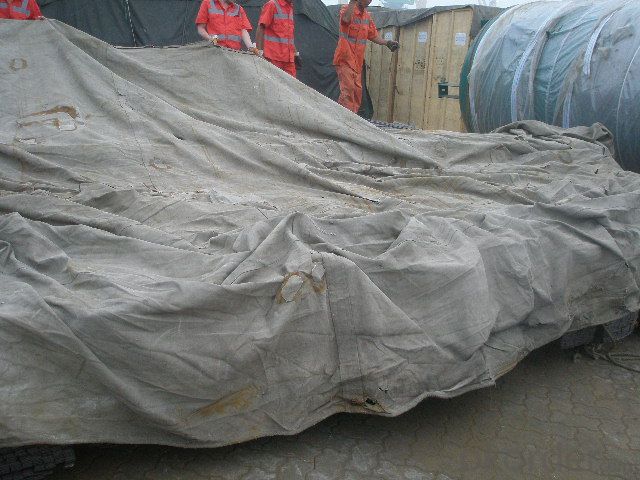
- Q: What are the different types of surface coatings available for steel flat bars?
- There are several types of surface coatings available for steel flat bars, each offering unique benefits and characteristics. 1. Galvanized Coating: This is a common type of coating where a layer of zinc is applied to the surface of the steel flat bar. It provides excellent corrosion resistance, protecting the steel from rust and other environmental factors. 2. Powder Coating: In this process, a dry powder is applied to the steel flat bar and then heated to form a durable coating. Powder coating offers a wide range of colors and finishes, making it a popular choice for decorative and protective purposes. 3. Epoxy Coating: Epoxy coatings are known for their excellent adhesion and chemical resistance. They provide a tough and durable layer that can withstand harsh environments, making them suitable for industrial applications. 4. Paint Coating: Paint coatings are a cost-effective option for protecting steel flat bars. They can be applied in various colors and finishes, providing both aesthetic appeal and protection against corrosion. 5. Anodized Coating: Anodizing is commonly used on aluminum, but it can also be applied to steel flat bars. This process involves creating an oxide layer on the surface, which enhances corrosion resistance and improves the appearance of the steel. 6. Chrome Plating: Chrome plating involves depositing a layer of chromium onto the steel flat bar surface. This coating provides excellent hardness, wear resistance, and a polished appearance. 7. Phosphate Coating: Phosphate coatings are often used as a pre-treatment before painting or powder coating. They enhance the adhesion of subsequent coatings and provide additional corrosion resistance. It is important to consider the specific requirements of your application when choosing the appropriate surface coating for steel flat bars. Factors such as corrosion resistance, durability, aesthetics, and cost should be taken into account to ensure the best choice for your needs.
- Q: Can steel flat bars be heat treated for increased strength?
- Yes, steel flat bars can be heat treated to increase their strength. Heat treatment is a process that involves heating the steel to a specific temperature, holding it at that temperature for a certain period of time, and then cooling it in a controlled manner. This process alters the microstructure of the steel, resulting in different mechanical properties such as increased strength. The specific heat treatment method used will depend on the desired strength and other properties required for the particular application of the steel flat bars. Common heat treatment processes for steel include annealing, quenching, tempering, and normalizing. It is important to consult with a metallurgical engineer or expert to determine the appropriate heat treatment method for achieving the desired strength enhancement in steel flat bars.
- Q: Can steel flat bars be used for elevator shafts or doors?
- Indeed, elevator shafts or doors can utilize steel flat bars. The strength and durability of steel flat bars make them a common choice for construction and fabrication projects. When it comes to elevator shafts and doors, it is crucial to employ materials that can withstand heavy loads, offer structural integrity, and ensure passenger safety. Steel flat bars possess these desirable characteristics, which is why they are frequently employed in the construction of elevator shafts and doors. By fabricating and welding them, the necessary framework and support for elevator systems can be created. Moreover, steel flat bars can be coated or treated to increase their resistance to corrosion, rendering them suitable for both interior and exterior elevator applications.
- Q: What are the different methods of surface texturing for steel flat bars?
- There are several methods of surface texturing for steel flat bars, including shot blasting, acid etching, laser engraving, and mechanical embossing.
- Q: Can steel flat bars be used for making furniture frames or supports?
- Yes, steel flat bars can definitely be used for making furniture frames or supports. Steel is a versatile and durable material that offers excellent strength and stability, making it ideal for furniture construction. Steel flat bars provide a strong foundation and structural integrity to furniture frames or supports, ensuring longevity and stability. Additionally, steel can be easily shaped and welded, allowing for flexibility in design and customization. It is commonly used in the construction of various furniture pieces such as tables, chairs, shelving units, and bed frames. Overall, steel flat bars are a reliable choice for furniture frames or supports, providing a sturdy and long-lasting solution.
- Q: What are the different types of protective coatings for steel flat bars?
- Steel flat bars have several options for protective coatings, each with unique characteristics and uses. Some common choices include galvanized coatings, powder coatings, epoxy coatings, polyurethane coatings, chrome coatings, and paint coatings. Galvanized coatings are popular for their ability to protect steel flat bars. This involves dipping the steel in molten zinc to create a protective layer. These coatings are highly resistant to corrosion and are often used in outdoor or marine environments. Powder coatings are applied as a dry powder and then cured under heat to create a durable finish. They offer excellent resistance to corrosion, chemicals, and UV rays. With a wide range of colors and finishes available, powder coatings are ideal for decorative purposes. Epoxy coatings are known for their strong adhesion and resistance to corrosion, abrasion, and chemicals. They consist of an epoxy resin and a hardener that react chemically to form a tough, protective layer. Industrial settings and situations requiring heavy-duty protection often utilize epoxy coatings. Polyurethane coatings provide durability and resistance to abrasion, chemicals, and UV rays. They are commonly used in harsh environmental conditions or areas with heavy traffic. Polyurethane coatings come in different finishes, including glossy and matte. Chrome coatings, or chrome plating, involve electroplating a thin layer of chromium onto the steel surface. This process enhances the appearance of the steel and provides excellent corrosion resistance. Chrome coatings are commonly used for decorative purposes or when a highly reflective surface is desired. Paint coatings offer a cost-effective solution for protecting steel flat bars. They can be applied using brushes, rollers, or spray guns and are available in various colors and finishes. While they provide some corrosion protection, regular maintenance and touch-ups may be necessary to ensure effectiveness. When selecting a protective coating, it is important to consider the specific requirements of the steel flat bars' environment and intended use. Factors such as moisture, chemicals, UV rays, and mechanical stress should be taken into account to choose the most suitable coating for optimal protection and longevity.
- Q: Can steel flat bars be used for making bicycle frames?
- Yes, steel flat bars can be used for making bicycle frames. Steel is a commonly used material for bicycle frames due to its strength and durability, and flat bars can be shaped and welded together to form the frame structure.
- Q: Are steel flat bars suitable for making furniture or fixtures?
- Yes, steel flat bars can be suitable for making furniture or fixtures. Steel is known for its strength and durability, making it an excellent choice for furniture or fixtures that require stability and long-lasting performance. Steel flat bars can be used to create various furniture pieces such as tables, chairs, shelves, or even lighting fixtures. Additionally, steel can be easily welded, bent, or shaped to meet specific design requirements, allowing for versatile and custom furniture creations. However, it's important to consider the aesthetic appeal and comfort aspects when using steel flat bars for furniture, as they may have a more industrial or modern look that might not suit every style preference. Nevertheless, with proper design and finishing techniques, steel flat bars can provide a sleek and contemporary look to furniture or fixtures.
- Q: What is the minimum width of a steel flat bar?
- The minimum width of a steel flat bar can vary depending on the specific requirements and standards set by the industry or application. However, in general, the minimum width of a steel flat bar is typically around 1/8 inch (3.175 mm). It is important to note that this can vary based on the specific use case, as certain applications may require narrower or wider flat bars. Additionally, different manufacturers may have their own minimum width specifications for steel flat bars. Therefore, it is recommended to consult the relevant industry standards or manufacturer guidelines for the specific minimum width requirement in a particular context.
- Q: What is the maximum length-to-thickness ratio for a steel flat bar?
- Industry standards and engineering specifications typically determine the maximum permissible length-to-thickness ratio for a steel flat bar. Generally, it is recommended to maintain a length-to-thickness ratio of around 160:1, which means that the bar's length can be up to 160 times its thickness. Nevertheless, it is crucial to understand that this maximum ratio may vary depending on the specific application and intended use of the steel flat bar. Different industries and engineering disciplines may establish their own guidelines and recommendations for maximum length-to-thickness ratios, taking into account factors such as load-bearing capacity, structural stability, and safety considerations. To determine the appropriate maximum length-to-thickness ratio for a steel flat bar, it is always advisable to refer to relevant codes, standards, and engineering guidelines specific to the application. Seeking the expertise of professional engineers and experts in the field can provide valuable insights and calculations, ensuring the structural integrity and safety of the steel flat bar in a given application.
Send your message to us
Prime Mild Steel Hot Rolled Flat Steel Bar
- Loading Port:
- China main port
- Payment Terms:
- TT OR LC
- Min Order Qty:
- 100 m.t.
- Supply Capability:
- 10000 m.t./month
OKorder Service Pledge
OKorder Financial Service
Similar products
Hot products
Hot Searches
Related keywords
